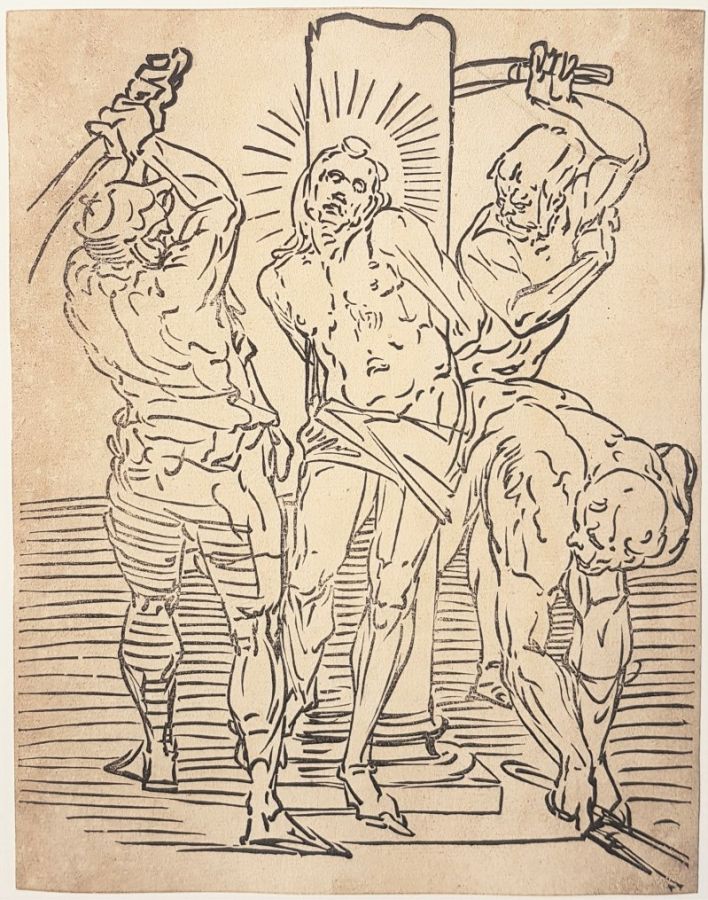Woodcut, 317 x 247 mm (sheet). Oberhuber 216
Very fine impression printed on watermarked laid paper : anchor in double outline with star (about 76 x 45 mm, including the star).
On our impression the subject is complete. Several of the rare known impressions are trimmed inside the subject at the left and right sheet edges and sometimes also at the bottom sheet edge, with consequent loss of the tip of the horizontal lines and sometimes of the whips held by the soldiers at the upper left and bottom right.
Generally in very good condition. Some soiling in the corners and on the left sheet edge; a diagonal printing crease in the upper right corner; two small thin areas on the back. A thin line in very light brown ink drawn along the edges of the sheet. With much gaufrage from the woodblock visible on the reverse.
Only nine prints, all woodcuts, are attributed to Luca Cambiaso today. The impressions still extant are extremely rare and have not been well researched for this reason.
The Flagellation of Christ was described for the first time by Konrad Oberhuber in 1966, in a volume about Italian Renaissance works in the graphic art collection of the Albertina. The Viennese museum owns a sketch by Luca Cambiaso, in brown ink and wash, Geißelung Christi. Komposition mit vier Figuren (inv. 2751), as well as an impression of the woodcut with the same subject. The Vienna impression has, in its lower part, sketches that Konrad Oberhuber attributes to Luca Cambiaso, as well as the wash which heightens the print, and the monogram LC added in the lower right corner. Konrad Oberhuber interprets this as “proof of a very close collaboration between the engraver and the artist.” (p. 138, our translation) Nadine Orenstein shares this opinion: “Nine spirited woodcuts were done either by Cambiaso himself or possibly by a printmaker closely connected with the artist.” (Genoa: drawings and prints, 1530-1800, p. 11). She points out, among other things, the fact that the style of the prints is extremely faithful to Cambiaso’s style, which must have required adapting the woodcut technique in complex ways: “The unusually spare handling of the woodcut medium in these prints, some heightened with colored wash, admirably succeeds in translating the lively nature of his distinctive linear drawing style.”
Short, supple, free strokes mix with more classic, rigid and vigorous ones, for an overall effect that indeed perfectly reflects Cambiaso’s style. The result is a surprisingly modern and powerful print.
References: Konrad Oberhuber: Die Kunst der Graphik: III : Renaissance in Italien : 16. Jahrhundert : Werke aus dem Besitz der Albertina, Graphische Sammlung Albertina, 1966; Henri Zerner: « Sixteenth-Century Italian Engraving in Vienna », in The Burlington Magazine, Apr., 1966, Vol. 108, No. 757 (April 1966), pp. 218-221; Carmen Bambach and Nadine M. Orenstein: Genoa : drawings and prints, 1530-1800, 1996.
Price: 25 000 EUR // 29 250 USD



